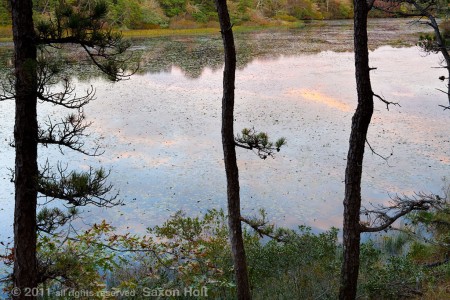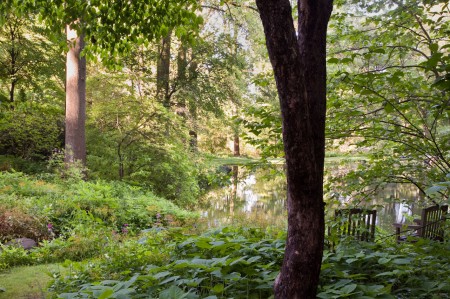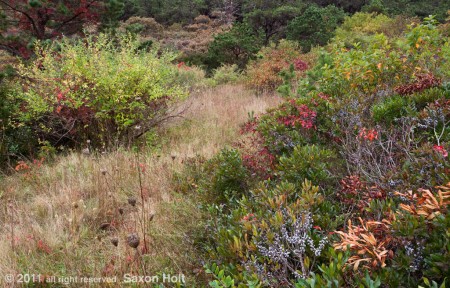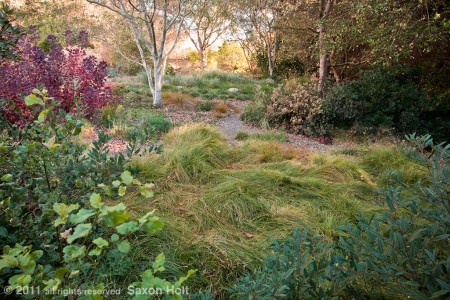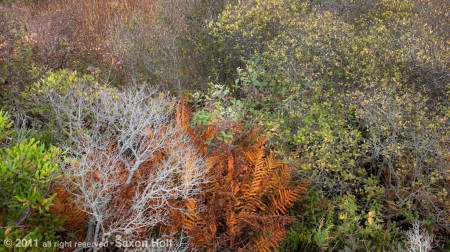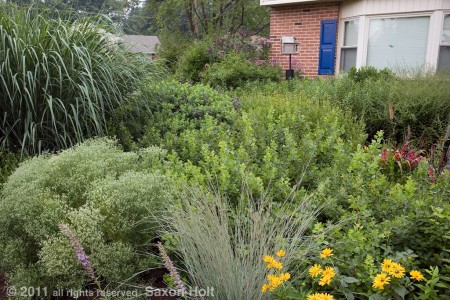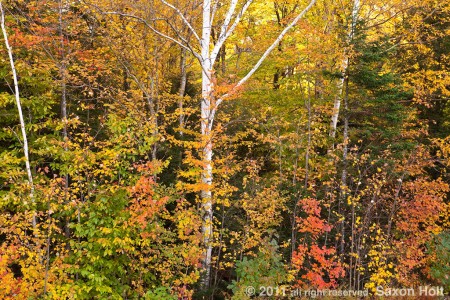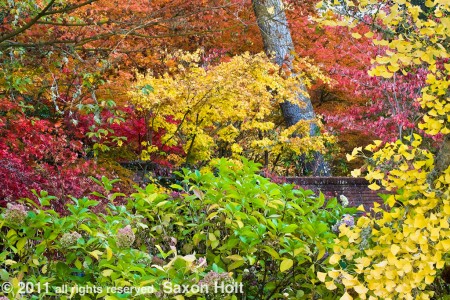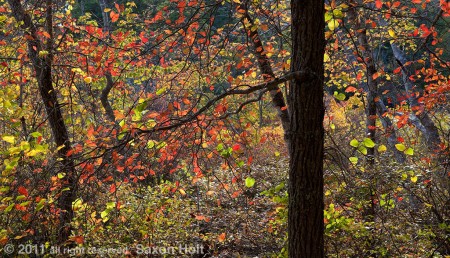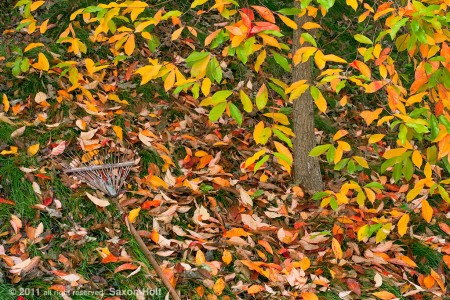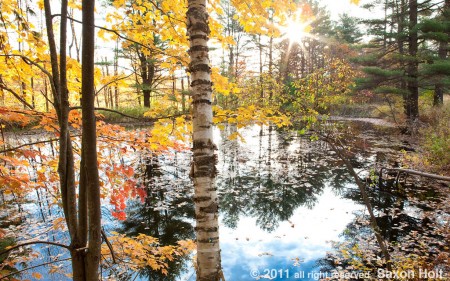 Last month, while our Gardening Gone Wild readers were out shooting for the Fill the Frame theme in our Picture This photo contest, I was on vacation in New England – I was filling my camera frame with fall color in Vermont and the landscapes of poet Mary Oliver in Cape Cod, such as Blackwater Pond:
Last month, while our Gardening Gone Wild readers were out shooting for the Fill the Frame theme in our Picture This photo contest, I was on vacation in New England – I was filling my camera frame with fall color in Vermont and the landscapes of poet Mary Oliver in Cape Cod, such as Blackwater Pond:
Funny thing though, while I was ostensibly on holiday from my work as a garden photographer I saw all the wild landscapes as gardens. God’s gardens to be sure, but I saw them defined by earthly designs.
It is no surprise that garden designers take inspiration from nature, but I am thrilled to see my landscape work take on more meaning for all the years I have spent in gardens. Both the first two photos were taken in the wild, and all the while I was remembering the photo I took of the pond at Mt. Cuba Center in Delaware.
Note the point of view looking past foreground trees and the use of the strong vertical lines to divide the photo into interesting blocks. I knew when I took the Mt. Cuba photo that I wanted an angle to make the scene look natural, and that act of studying gardens has allowed me to see better landscape photos.
Imagine my delight, an admitted grassaholic on photo safari, to round a bend on my hike in Cape Cod National Seashore to find this scene.
Native blueberry and bayberry shrub border with a lawn substitute of a wee meadow.
Because I spent two years photographing designed meadows for The American Meadow Garden I knew what I was looking at, I knew the story I wanted to tell. Communicating good garden information gives meaning to my work, and finding inspiration in nature that can help gardeners in their work is a joy.
In the book we started with the premise that meadows must mimic local ecologies to be successful, then sought gardens that proved it. I studied examples that worked, so now I have a much better idea how to photograph wild vignettes that might serve to inspire gardeners.
This garden meadow designed by David Fross helped me see how grasses, shrubs and trees can be placed together in photogenic fashion, so now when I see those elements in the wild I see new meaning and purpose in my photography. Sure, the original design ideas often start with nature before the designer ever puts their own ideas together, but here we are talking about the photographer finding a story to tell.
When I returned from vacation, I set about judging the photo contest. We had a huge number of entries and I was at first surprised to see how many entries were nature scenes, rather than garden scenes. I confess I favored the gardens in the judging (as I disclosed :-)), but I loved seeing the nature scenes.
I realized it is only natural for other gardeners, like me, to find inspiration in nature and they might submit photos to a garden contest. ( This is a big duh, but isn’t it odd how some of us think we are the only ones with insight ?). However, I think many photos submitted to our contest could have been stronger if there were a more obvious story.
Looking over the entries, with my own fresh insight on how our knowledge of gardens can help us tell better stories with our nature photography, let’s look at a few more examples. As I have suggested above, use the garden as your inspiration for a story when looking to photograph in the wild.
Start with the inspiration of whatever landscape you find yourself in. Think of how that applies to a garden. Here, of course I am assuming every gardener is being amazed in nature by the plants. Here, we are ignoring mountains, canyons, oceans, clouds, and critters. Who cares about those things?
On that same hike at Cape Cod where I found the meadow I found this tapestry of mixed native plants.
In trying to frame an inspiring composition I thought of it as a mixed border of ferns, perennials and shrubs. I have learned about mixed borders by photographing them, as in this mixed border by Nancy Beaubaire:
Perhaps the photo of the Cape Cod native plants will one day inspire a New England gardener to incorporate these native plants into their designs. Whether or not, I am happy with my own photo that shows such a plant combination in the wild. That’s the story.
In Vermont I was lucky to find wonderful fall color.
This is the sort of scene that inspires gardeners to bring fall color into their gardens.
I photographed the autumn color at Filoli gardens long before I ever went to Vermont and this exact photo was in my mind as I went hunting for photos. Observant readers will also note this photo was included in my original contest announcement: “This autumn color study of Filoli makes you want to crawl into the scene and see more. Extra points for these garden landscapes that fill the frame.”
Filling the Frame was not just a contest exercise, it is my constant mantra as I look to compose a photo and look for a story to tell. The more I remind myself of this when I work to illustrate gardens, the more it spills over to my personal work. And now that reflects back, to even better garden photos. A dance of self improvement that I hope will not simply make me feel better about my landscape work, but will allow me to find deeper beauty in gardens that use wild inspirations.
I did not expect to find my favorite tree for fall color, the tupelo (Nyssa sylvatica) at Cape Cod. It has such reliable color in all gardens I have seen it in. I knew when I saw it I must try to make a photo of some kind that highlighted the color.
I made this using back light of the fading sun at the edge of Blackwater Pond – the same afternoon and across that pond from the earlier, poet inspired photo at the beginning of this post.
I did not have some pre-existing garden photo in mind when I took this image but I darn sure wanted to take a renewed look my own tupelo in my own front yard when I returned.
Hmmm. Here is a clear case of the wild garden photo now improving my garden work. In nature , the rake is a useless tool. I continue to learn….

